Ball Bearings - A Complete Buying Guide
To help you choose the right bearing, we cover all the types, brands and sizes of ball bearings available.

What are ball bearings?
Ball bearings are rolling-element bearings which use balls to maintain the separation and distance between the bearing races. They are designed to reduce rotational friction while supporting both radial and axial loads.
The types of ball bearings that we think of today were initially manufactured at the end of the 19th century. The Welsh inventor Phillip Vaughan was given the first patent for ball bearings and his was the earliest design to feature a ball running along the groove in the axle assembly. Another major development came in 1869 when the Paris-based bicycle mechanic Jules Suirray created the first ball bearing of the radial variety. This radial bearing was included in the manufacture of the bicycle that French racer James Moore rode to victory in the first Paris-Rouen race of 1869.
The use of ball bearings for manufacturing purposes has become widespread since the turn of the 20th century. They are integrated into the production of various mechanical instruments and devices due to the associated ease of movement and friction reduction. Ball bearings allow for the injection of motion between different parts and transmit energy for mechanical operation.
Different types of ball bearings
Open-style ball bearings are the most common variety. However, there are also shielded-style bearings, which feature metal shields on either one or both sides. The shield prevents dirt and debris from contacting and affecting the operation of the bearing. However, it also allows for the free flow of oil through the bearing for smooth operation. The use of ball bearings featuring seals has become increasingly common during recent times. These bearings also function effectively and are particularly unlikely to fail. The more balls featured within the ball bearing, the greater the load that the bearing will be able to take.
Angular contact ball bearings
Angular contact ball bearings feature internal and external ring raceways, which are disconnected from each other in relation to the bearing axis. These bearings allow for the support of loads with a combination of axial and radial forces. It is not possible to dismantle these bearings and remove the races or balls. However, they may feature a relatively large number of balls for increased support of axial and radial loads. Such bearings allow for the optimisation of speed and minimisation of friction specific to different loads.
The three different types of angular contact bearings are single row bearings, double row bearings, and four-point contact bearings.
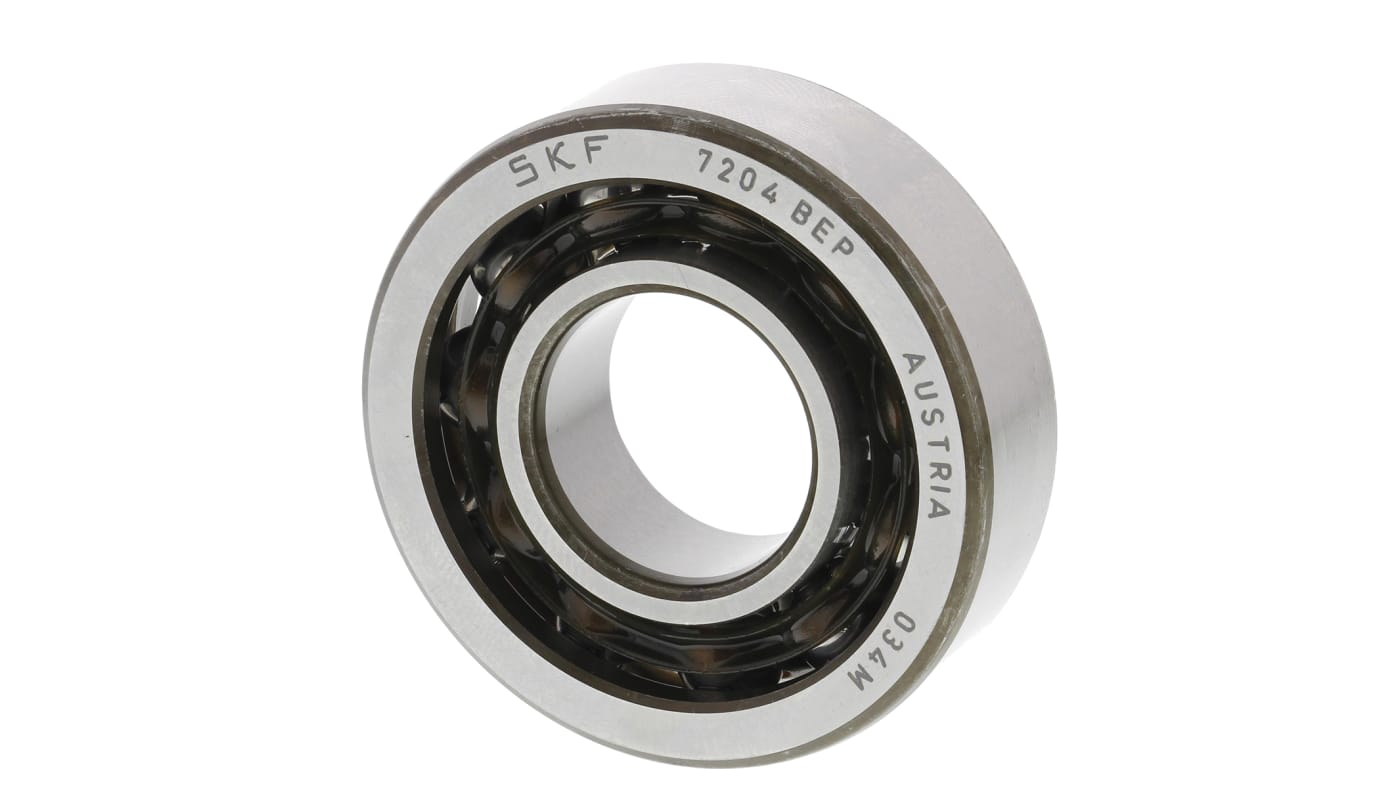
-
Common applications:
- Compressors and pumps
- Metal rolling mills
- Electric motors and generators
- Machine tool spindles
- Vehicle hub bearings
Axial deep groove ball bearings
Axial deep groove ball bearings are suitable for highly specific purposes. They provide exclusive support for the axial forces projected by loads. The deep groove bearings consist of shaft-locating washers, housing-locating washers, and ball and cage assemblies. While some feature flat washers, others come complete with spherical housing-locating washers for the prevention and correction of static misalignment. It is absolutely essential to avoid the projection of any radial force upon these bearings.
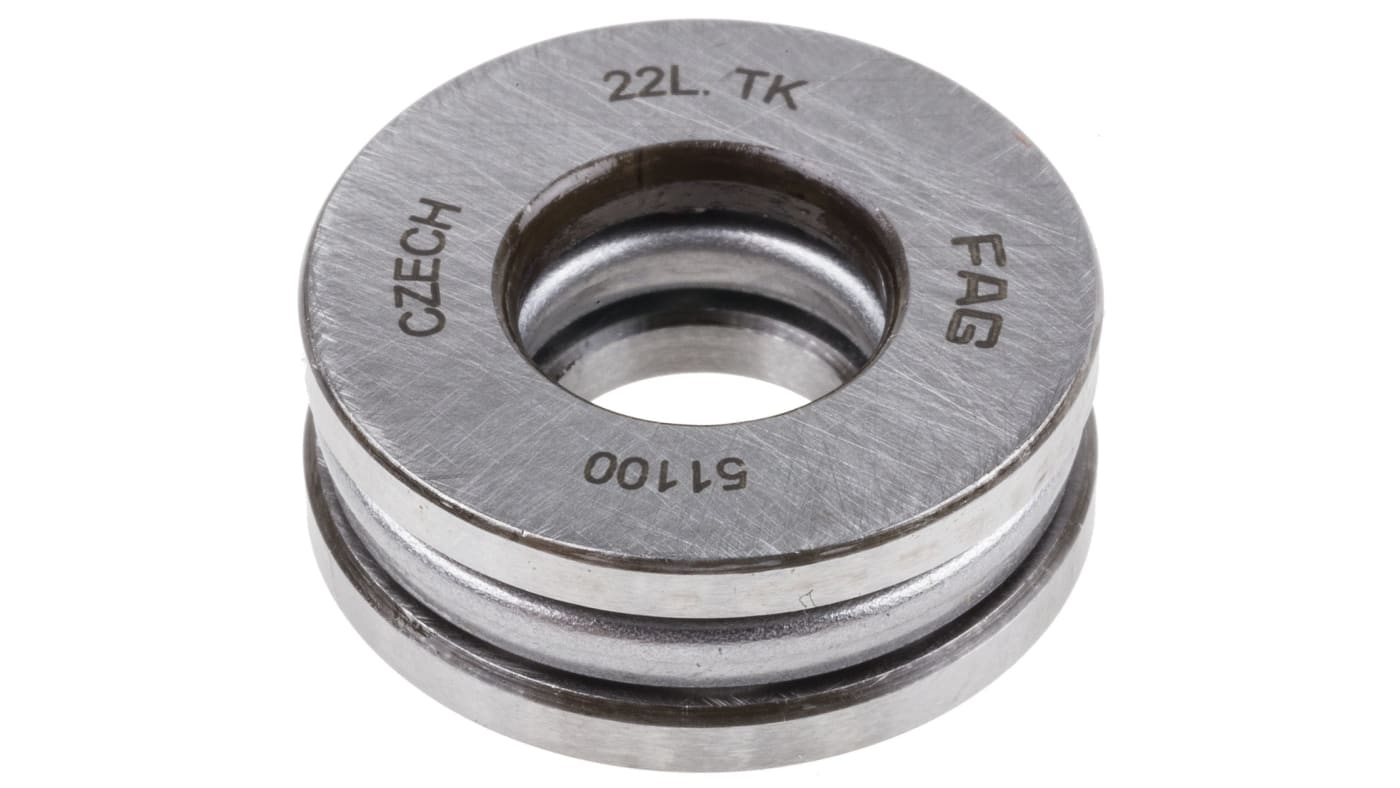
-
Found in these industries:
- Agricultural
- Machine tool
- Material handling
- Printing
- Wind energy
Deep groove ball bearings
Deep groove ball bearings are the most commonly used variety of ball bearings and can be purchased in seal, shield, and snap-ring arrangements. The race dimensions within these kinds of bearings closely match the dimensions of the balls that are contained. They are also well suited to the support of weighty loads. Deep groove bearings provide both radial and axial support. However, the contact angle can’t be adjusted in order to vary the relative levels of such loads.
Types of deep groove ball bearings include single row deep groove bearings, extra small and miniature bearings, maximum type ball bearings, and magneto deep groove ball bearings.
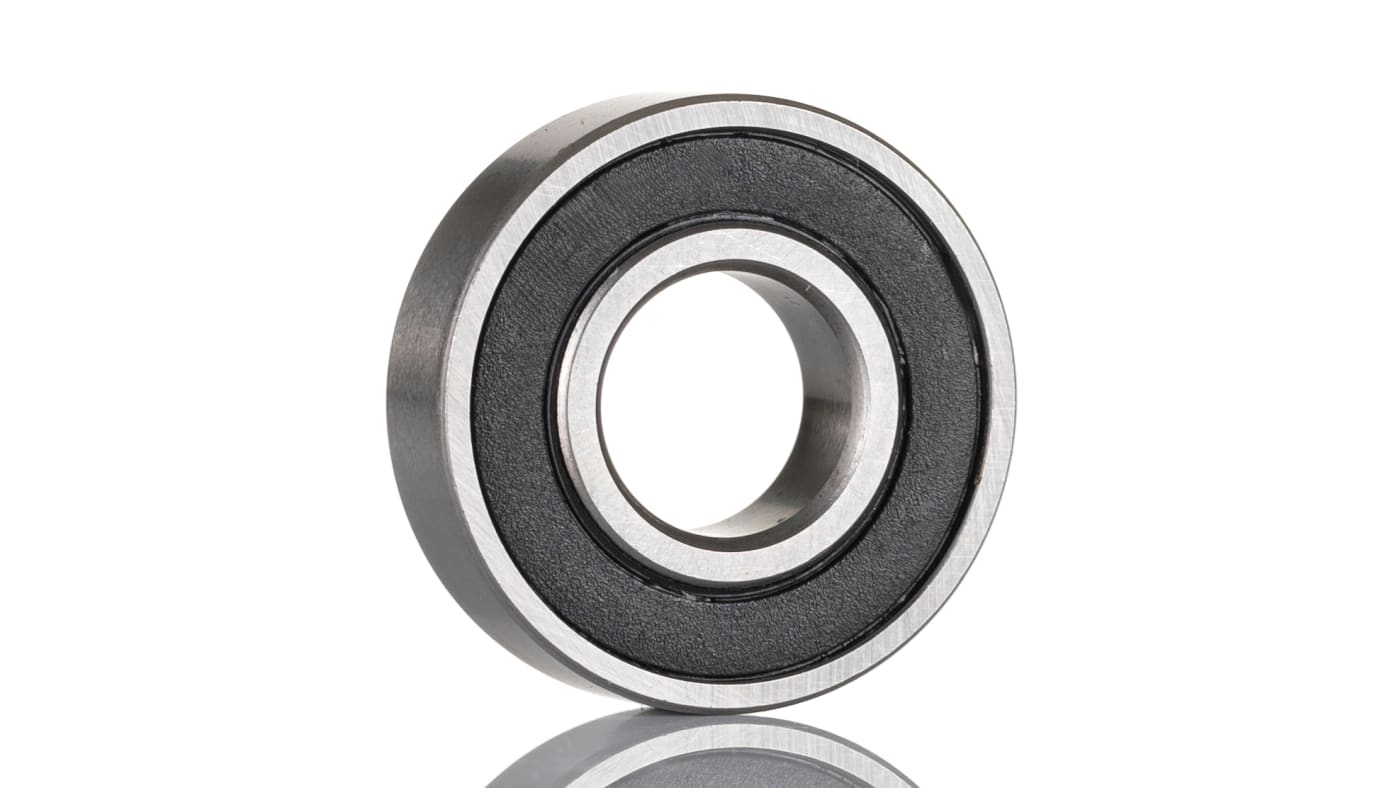
-
Common applications:
- Electric motors
- Vehicle motors
- Office machinery
- Garden tools
Linear ball bearings
Linear ball bearings are designed to provide free motion in one direction. They are the most widely used variety of linear slide and ensure a smooth precision motion along a single axis linear design. Featuring self-lubrication technology, these ball bearings allow for optimum performance and reliability. They are comprised of two linear ball bearing rows, integrated within four rods on alternate sides of the base.
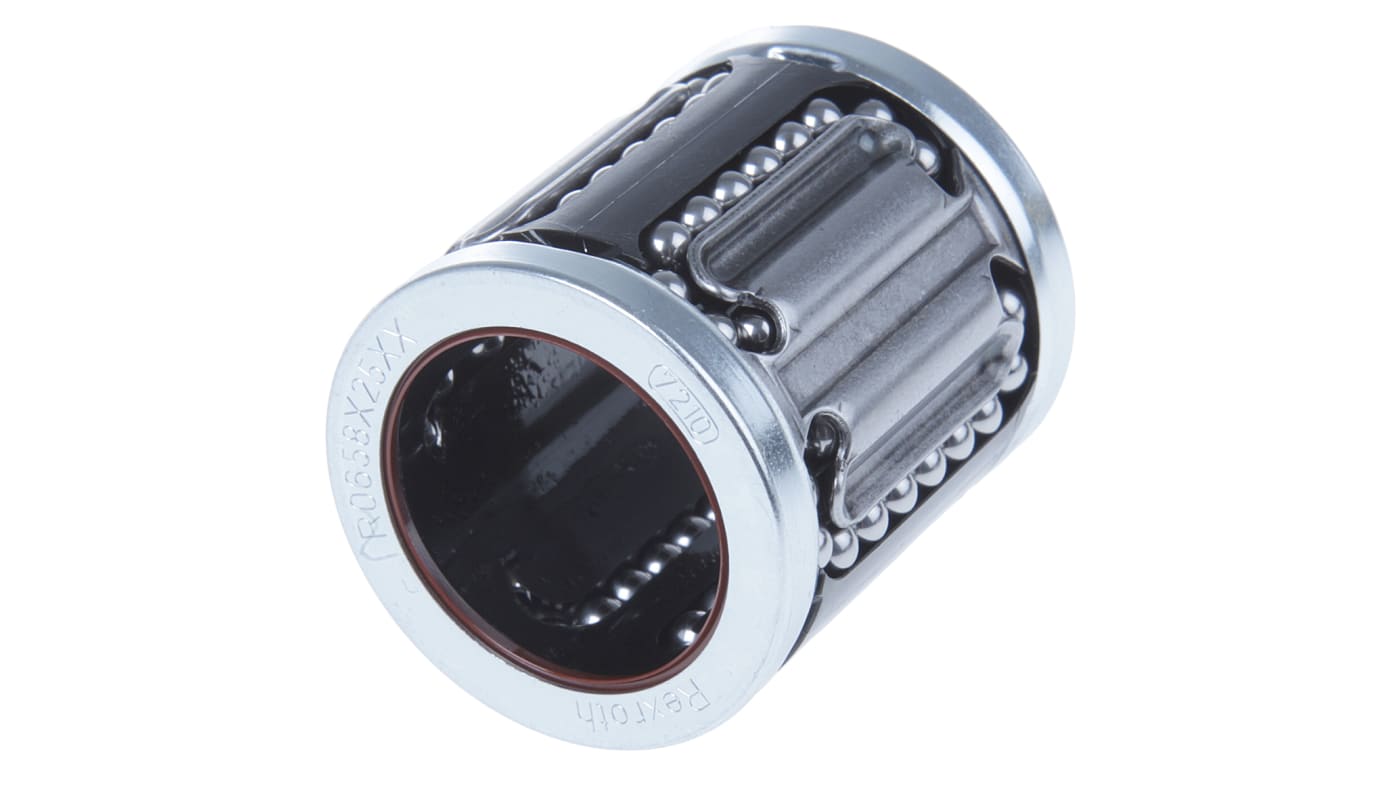
-
Common applications:
- Precise instrumentation
- Robotic assembly
- X-ray and imaging equipment
- Cabinetry
- Clean room environments
Miniature ball bearings
Miniature bearings, otherwise known as instrument or micro bearings, have a nominal outside diameter of under 9mm. Small ball bearings have a nominal inner diameter of less than 10mm and an outer diameter upwards of 10mm. It is common for miniature and small ball bearings to be made from stainless steel due to the relatively low force of objects exerted upon them.
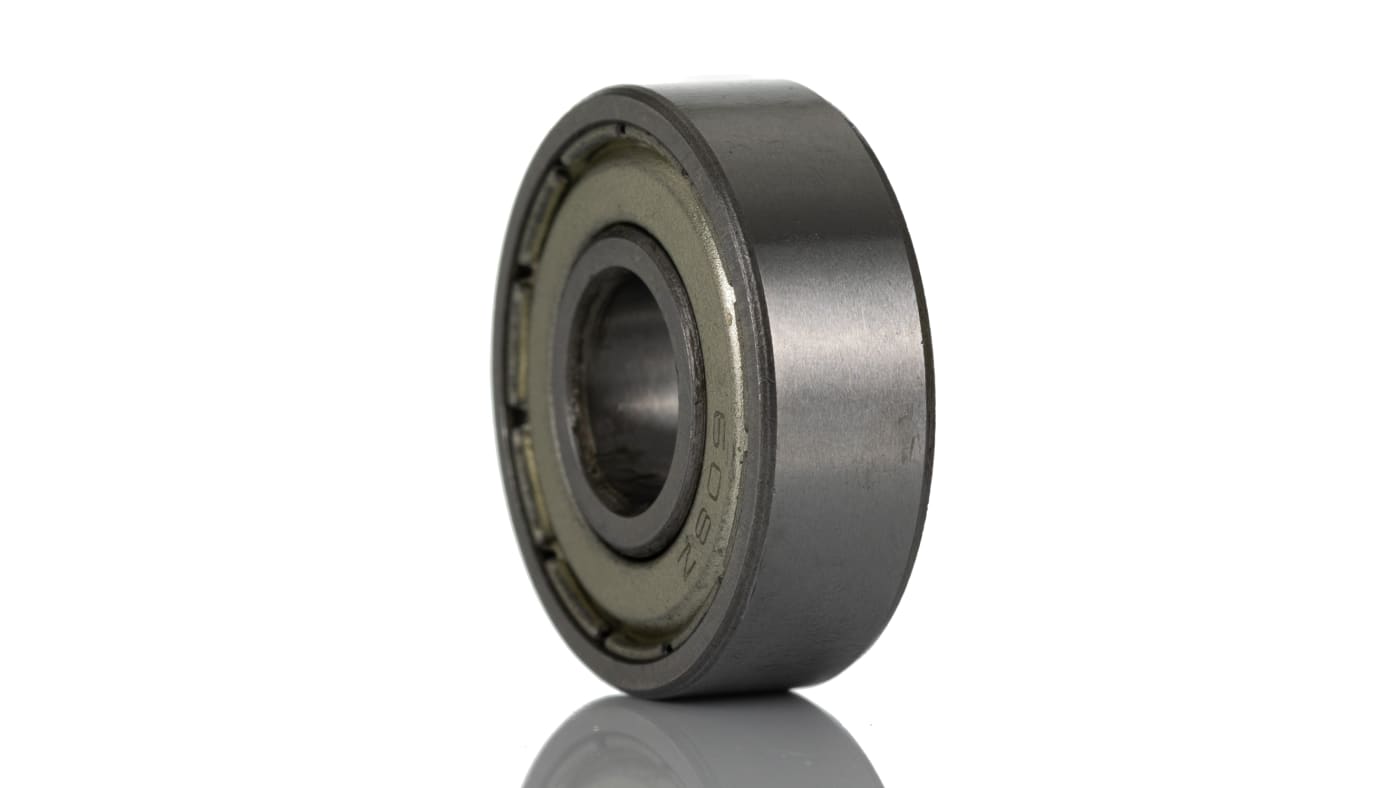
-
Common applications:
- Gyros
- Anemometers
- Flow meters
- Miniature gearboxes
- Small motors
- Radio controlled models
Radial ball bearings
Suitable for a wide range of purposes, radial ball bearings offer exceptional levels of performance. Also referred to as deep-groove and Conrad bearings, they have the capacity for either radial or axial loads as applied to the shaft. However, the combined application of such loads requires axial angular contact. Adjustment of the axial radial bearing angle allows for equal distribution of the axial and radial loads along the angular contact ball bearings.
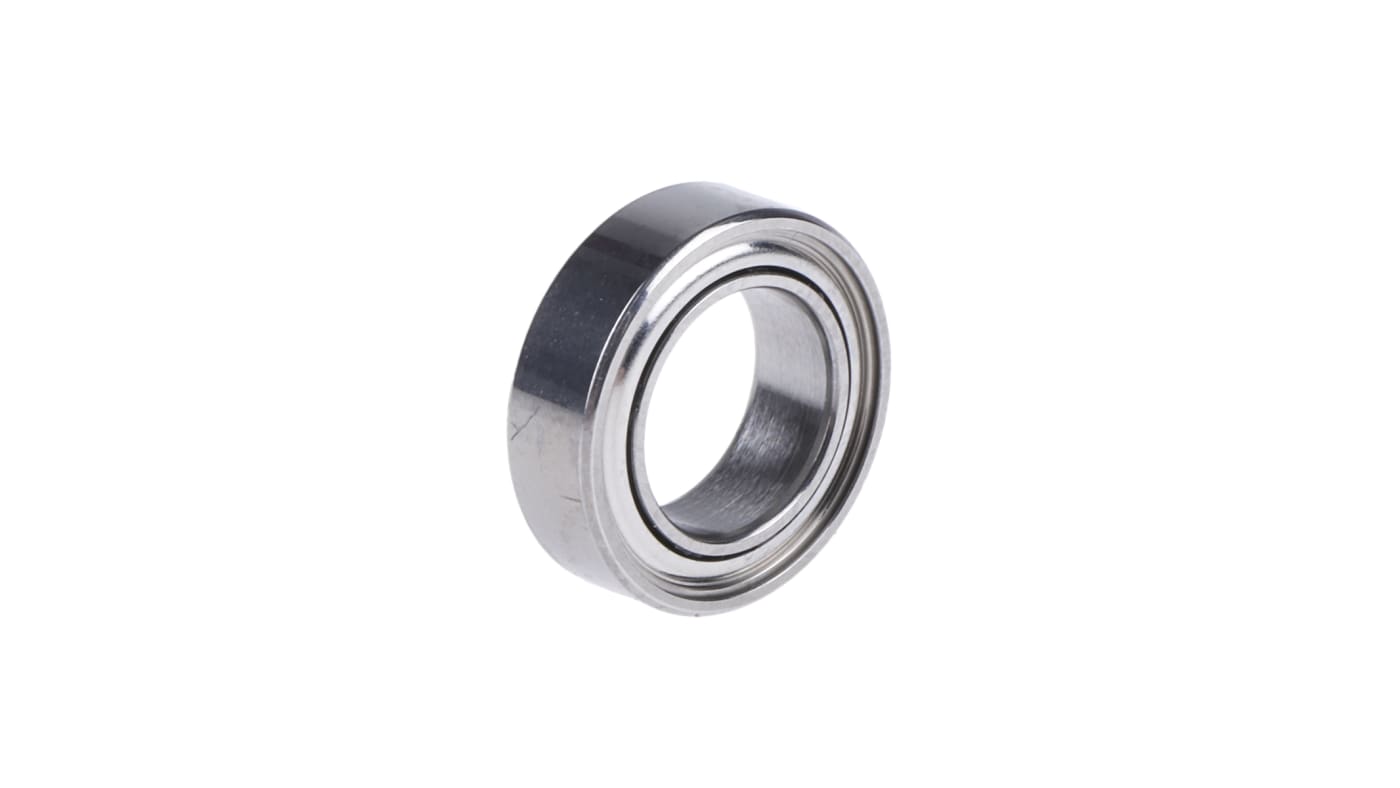
-
Common applications:
- Vehicle systems
- Manufacturing processes
- Toys
- Conveyor belts
- Pulley systems
Self-aligning ball bearings
Self-aligning ball bearings feature an inner ring and ball assembly, which is held securely within an outer ring with a spherical raceway. The design of these ball bearings is such that they can tolerate a minor angular misalignment occurring as a result of either deflections or incorrect mounting.
Such ball bearings are typically incorporated within long shafts due to the associated difficulty of properly mounting housing bores. It is also quite common for such bearings to be included in mechanical systems where there would otherwise be a risk of shaft bending during operation. However, the use of self-aligning bearings should be restricted to light axial load applications because the outer ring raceway provides a limited amount of support for the rolling elements.
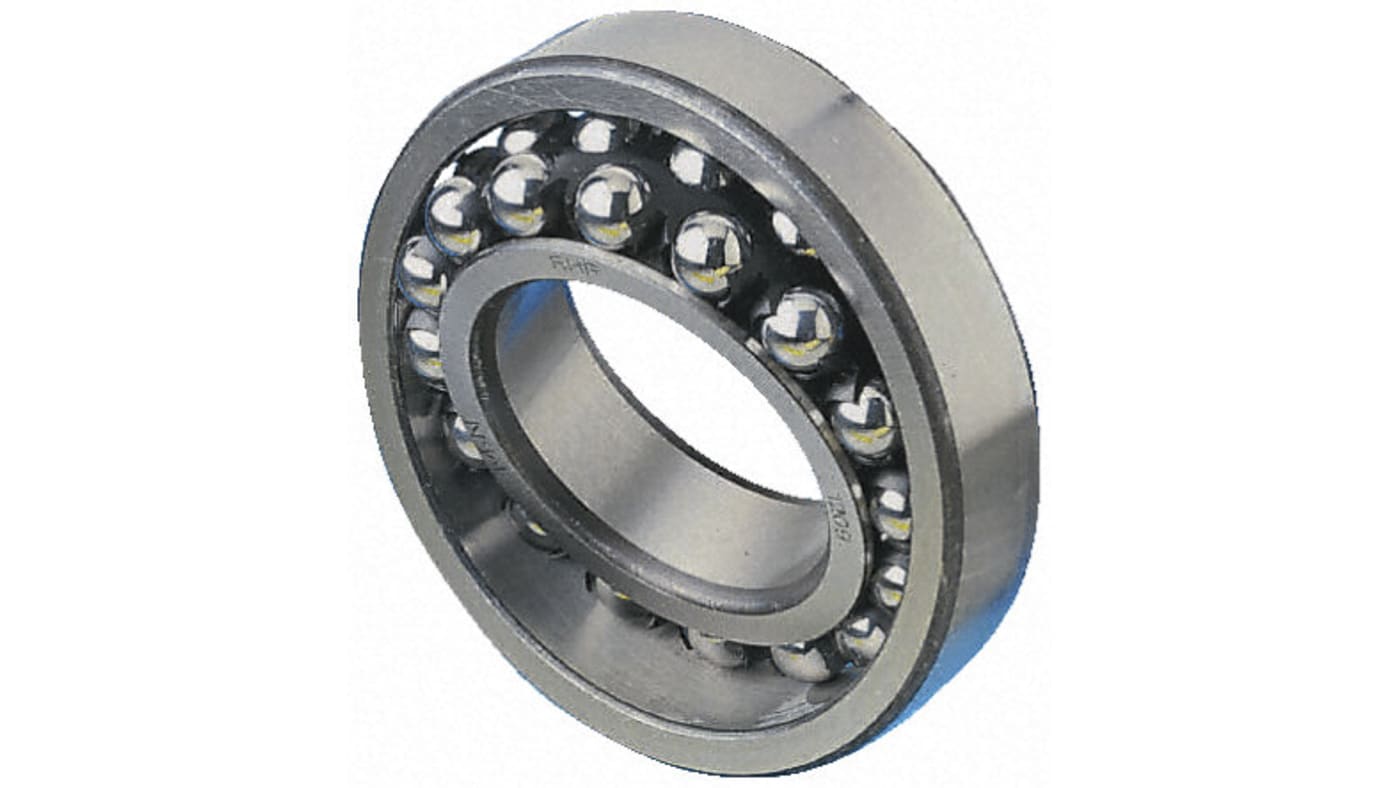
-
Common applications:
- Gearboxes
- Final drive transmissions
Thrust ball bearings
The thrust bearing is a unique variety of rotary bearing. As with other bearings, they facilitate interaction and movement between mechanical parts. However, their primary role is in the support of axial loads. Varieties of thrust bearings come complete with flat or aligning seats that correspond with the shape of the outer ring seat. Thrust bearings provide exclusive support for axial loads.
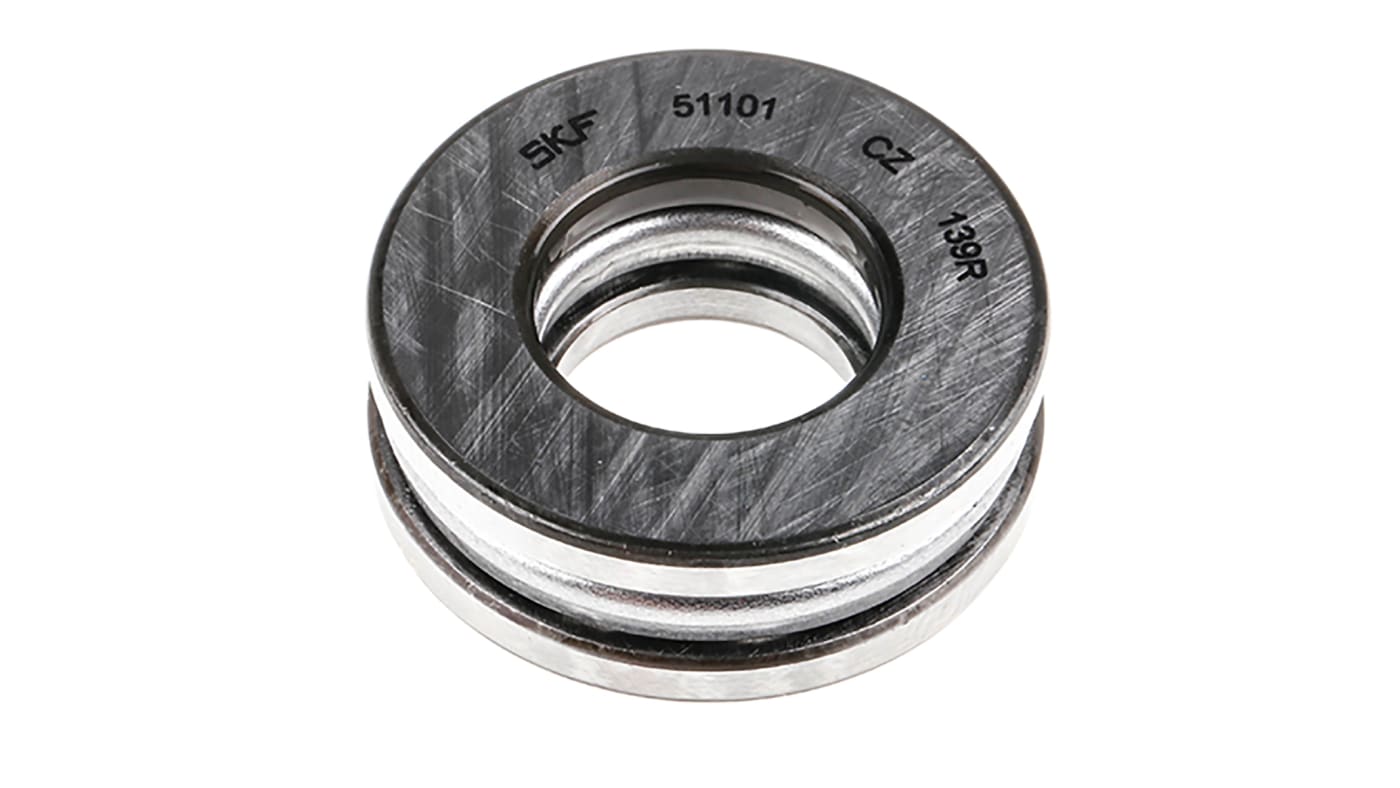
-
Variants of thrust bearings:
- Cylindrical thrust roller bearings
- Tapered roller thrust bearings
- Spherical roller thrust bearings
- Fluid bearings
- Magnetic bearings
Bearing codes explained
As we have discussed, bearings can have many different design configurations. To help navigate these and easily identify the bearing you require, they usually have a code that relates to the bearing type, size and even material.
Bearing manufacturers can create their own codes or prefixes, please note these may differ depending on the brand, so it is always recommended to check the details from the specific manufacturer.
Bearing Code Example - 6 2 02 2RS
Let's break down this example by each part:
(6) 2 02 2RS - The first number refers to the Bearing Type. 6 = Single row deep groove ball bearing.
6 (2) 02 2RS - The next digit donates the Bearing Series or durabilityof the bearing. 2 = Light
6 2 (02) 2RS - These numbers relate to the Bore Size. 02 = 15mm
6 2 02 (2RS) - Finally the suffix contains any further details around the bearing such as seals or shields. 2RS = Both Sides Sealed.
A bearing with the code 62022RS is a Single row deep groove ball bearing with light toughness, bore size of 15mm and has both sides sealed.
Despite the slight differences between manufacturers, most bearings will follow this structure for their codes. So you can use the information below to determine the bearing you have or require.
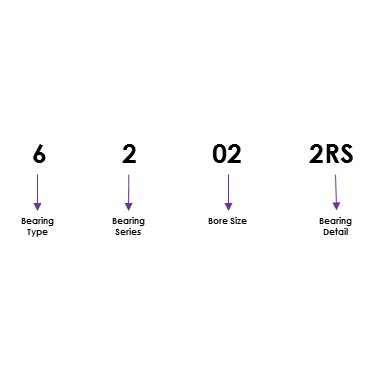
Bearing Code Tables
Bearing Types
| Type Code | Bearing Type |
| 1 | Self-aligning ball bearing |
| 2 | Spherical roller bearing |
| 3 | Tapered roller bearing |
| 4 | Deep groove double-row ball bearing |
| 5 | Axial deep groove ball bearing |
| 6 | Single row deep groove ball bearing |
| 7 | Single row angular contact bearing |
Bearing Series
| Series Code | Durability |
| 0 | Extra light |
| 1 | Extra light thrust |
| 2 | Light |
| 3 | Medium |
| 4 | Heavy |
| 8 | Thin section |
| 9 | Very thin section |
Bore Size
Usually, the bore size is 5 x the 3rd and 4th digit in the bearing code, excluding 0-3. The table below shows examples:
| Code | Bore size (mm) |
| 00 | 10 |
| 01 | 12 |
| 02 | 15 |
| 03 | 17 |
| 04 (x5) | 20 |
| 05 (x5) | 25 |
| 10 (x5) | 50 |
Suffix - Common seals, shields and other details
| Code | Details |
| K | Tapered bore |
| E | Increased load-carrying capacity |
| RS | Rubber seal on 1 side |
| 2RS | Rubber seal on 2 sides |
| P | Moulded glass fibre reinforced polyamide 6,6 cage |
| Z | Metal shield on 1 side |
| ZZ | Metal shields on 2sides |
What are ball bearings used for?
There are two types of loads that have a bearing on the function of the ball bearing. The radial load is projected around the radius and vertical force in relation to gear trains. There are also axial loads that project horizontal force upon the bearing. The other type of load to account for is dynamic, referring to the combined effects of the radial and axial forces.
There is a minimum of three races within each ball bearing. The balls are inserted within these braces for support of the different load types. One of the races typically remains stationary, with another being connected to a rotating assembly (hub or shaft). The balls rotate instantaneously with the bearing race. Ball bearings have been included in the manufacture of everything from skateboards to hard drives for optimum performance and functionality.
Specific ball bearing applications include:
-
Aerospace engineering
-
Centrifugal pump production
-
Motors
-
Conveyors
-
Cooling fans
-
Robotics
FAQs
How strong are ball bearings?
The maximum load that can be supported by a ball bearing corresponds directly to the outer diameter of the bearing, multiplied by its width (with the width being measured in the direction of the axle). The load rating of the ball bearing will remain the same and shouldn’t be exceeded due to the associated risk of plastic deformation in the raceway. The operating speed and type of load being carried are the two factors that have a direct bearing on the lifespan of the ball bearing. Ball bearings are expected to remain in optimum condition for 1 million rotations, which corresponds to a lifespan of 5.5 working hours with said rotations being at the speed of 50Hz or 3,000 rpm. However, some bearings will last five times as long given the same level of operation.
How are ball bearings assembled?
Ball bearings are made in a variety of sizes, from small bearings with an outer diameter of 1mm, which are typically featured within small medical devices, to bearings which have an outer diameter in excess of 15 feet and are incorporated in industrial machinery. The production of the balls involves a series of steps including machining, heat treating, honing, lapping, and assembly. Chrome steel is the primary material used in the manufacture of ball bearings. However, a variety of materials are used for the optimisation of performance and lifespan.
The steps in the production of inner and outer ball bearing rings are as follows:
-
Rings are gathered in the form of tube stock and cut into the basic shape using lathe-like machines
-
Outer ring faces are stamped with the bearing number and manufacturer details
-
The rings are heated to a temperature of 1565 degrees F for 15-20 minutes before being quenched in oil at 375 degrees for 15-20 minutes and tempered at 340 degrees for around 2 hours
-
The races are honed and finished with grinding wheels, leaving a smooth and accurate surface
This process is followed in the production of the balls:
-
The balls begin in the form of wire or rod slugs that contain a sufficient amount of the material required for production
-
The slugs are subjected to a cold heading process so that they take an almost perfectly spherical shape
-
Flash and burrs are removed as the balls are subject to filing and tumbling
-
The balls are softly ground until they take a consistent form
-
The balls are hardened following a similar process to that used in the manufacture of the rings
-
The balls are ground once more to ensure that they match with the specifications
-
A lapping process is undertaken to ensure that the balls match the desired tolerances and surface finish requirements
Can ball bearings be welded?
Ball bearings cannot be welded without a negative impact on performance. You would be better advised to apply epoxy glue for their attachment.
How do plastic ball bearings work?
Budget-friendly plastic ball bearings don’t require any external lubrication and are corrosion resistant, given the use of glass or plastic balls. These relatively lightweight bearings are suitable for use in particularly harsh environments and are a common choice for workers within the medical and food industries. Other common materials for ball bearings include steel and stainless steel.
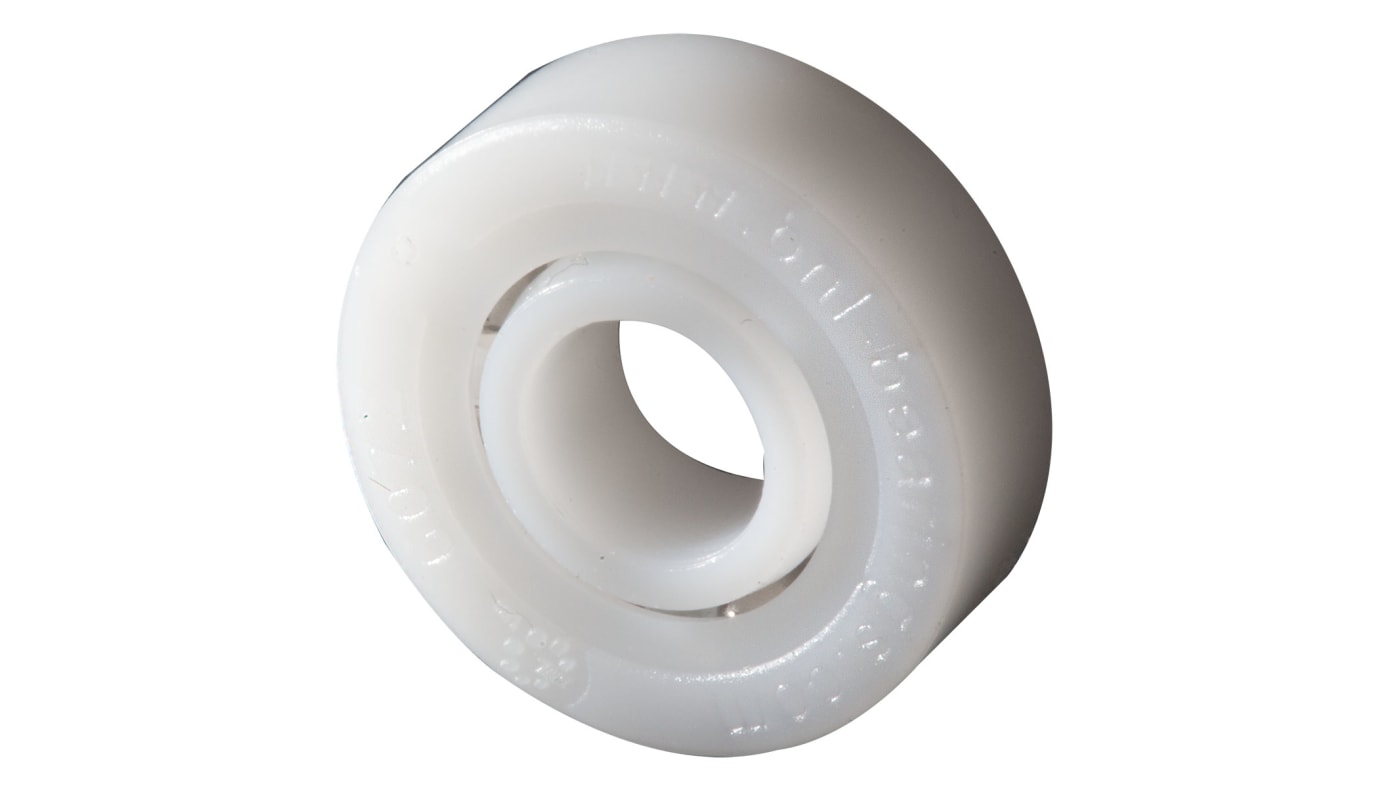
Plastic ball bearings
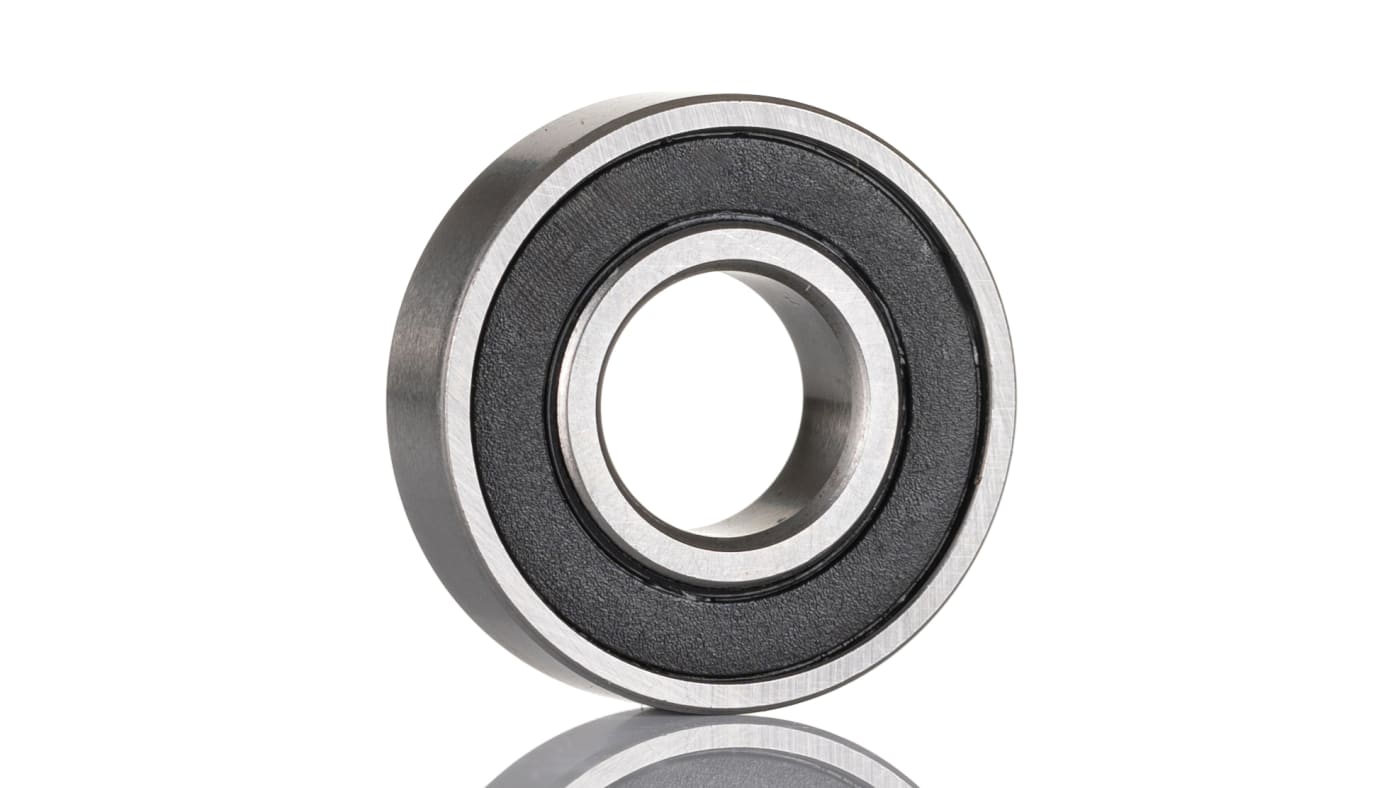
Steel ball bearings
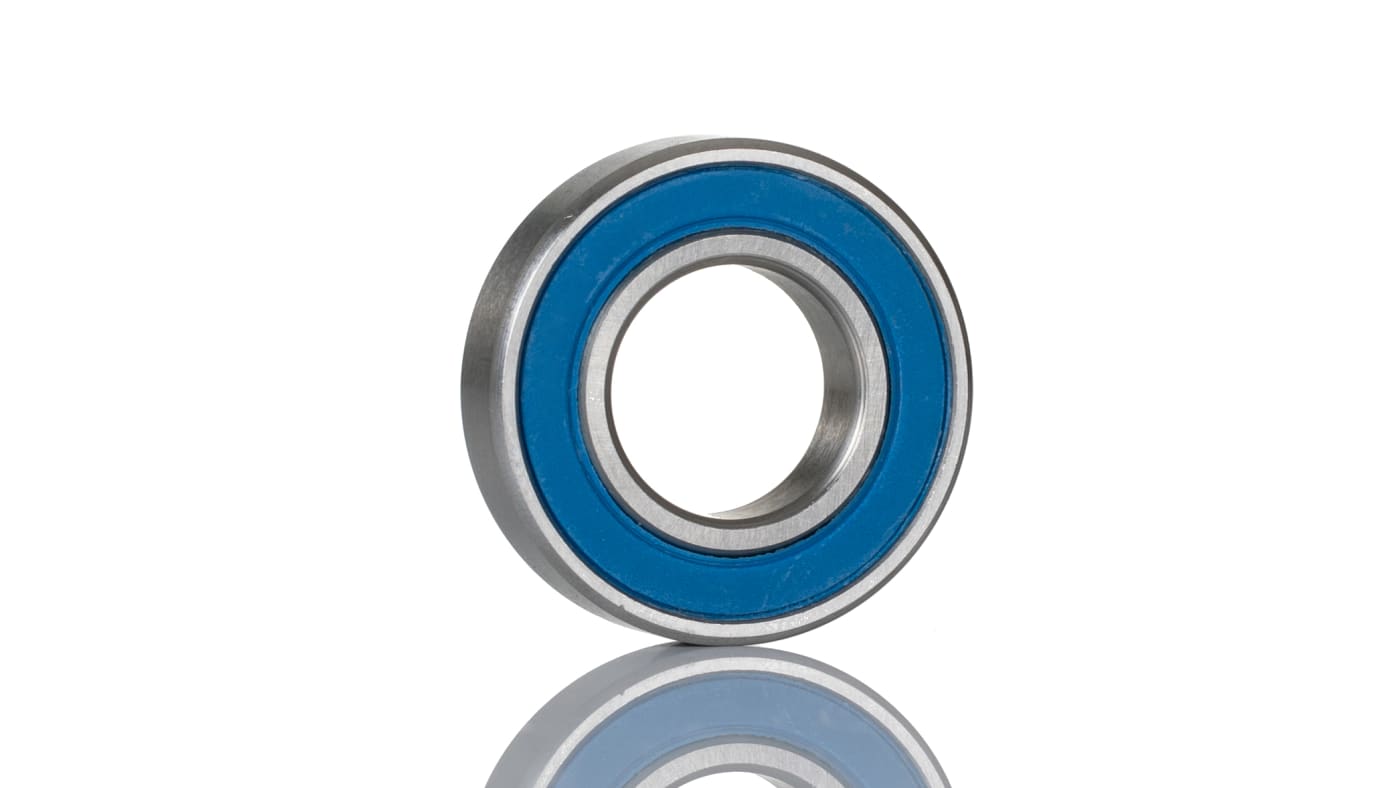
Stainless steel ball bearings
Popular ball bearings brands
Browse our most popular brands of ball bearings using the links below:

NSK ball bearings
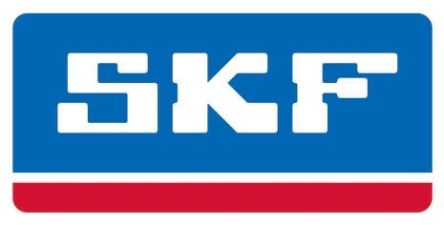
SKF ball bearings

FAG ball bearings